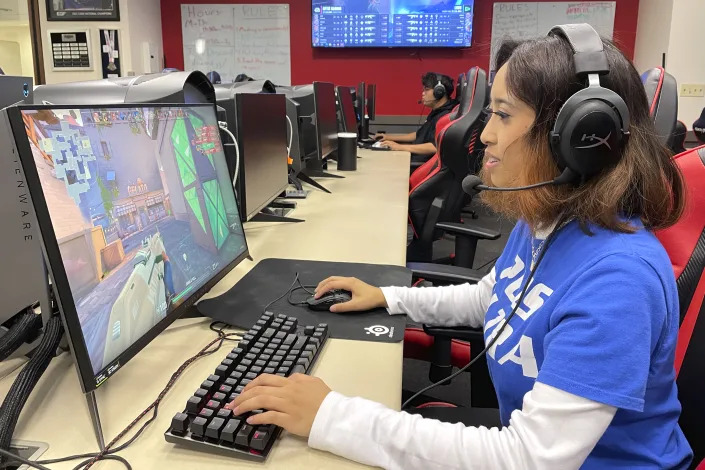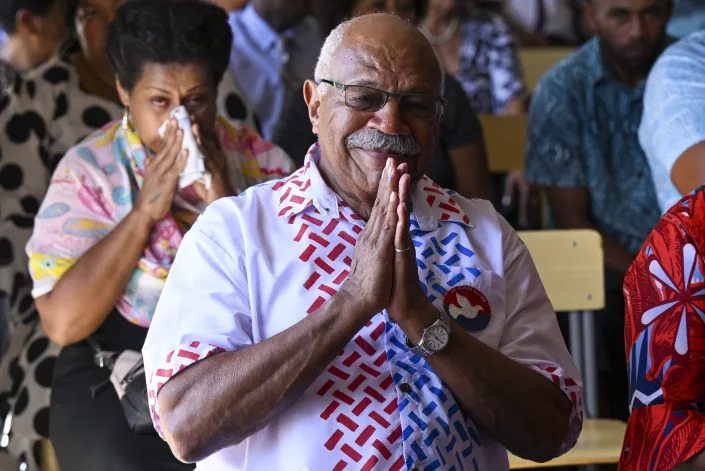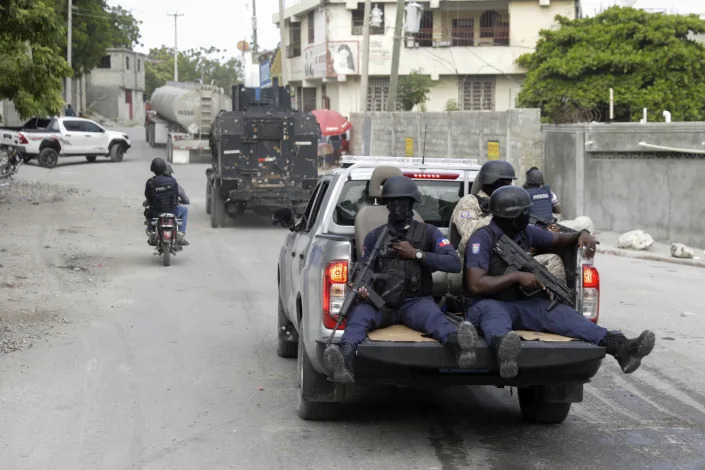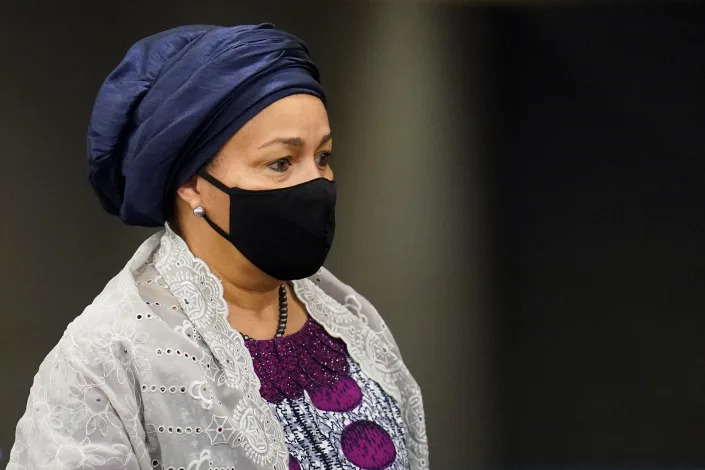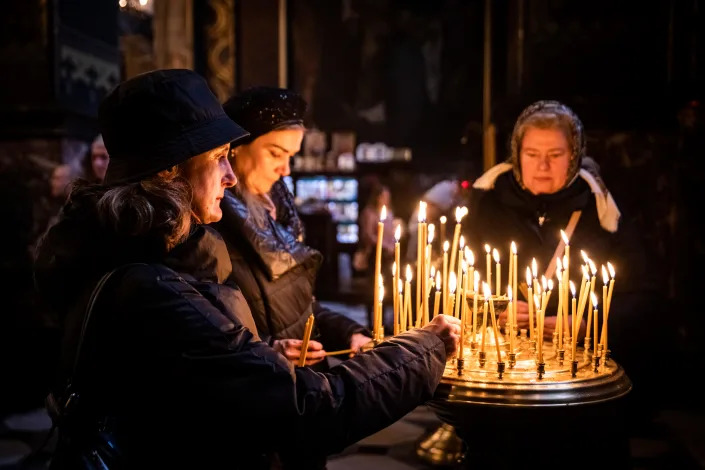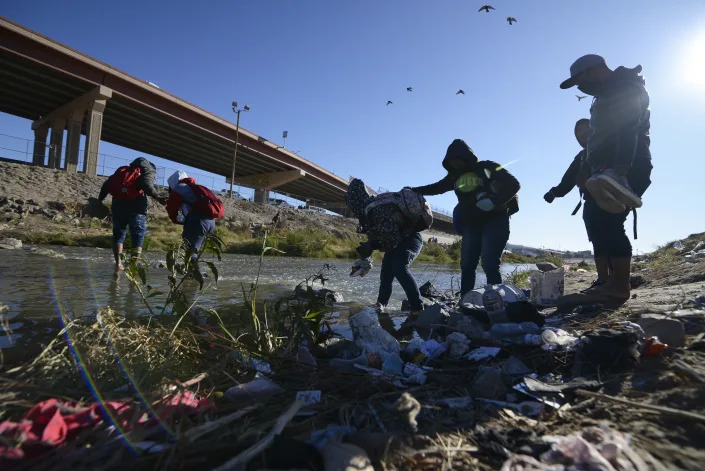Guillaume Reuge with Mathieu Rabechault and Juliette Collen in Paris
Tue, December 20, 2022

Flights of the new European Vega-C rocket have been suspended pending an investigation into an overnight launch failure, French firm Arianespace said Wednesday, leaving Europe with few avenues into space.
Just minutes after the Vega-C rocket lifted off from Europe's spaceport in Kourou, French Guiana at 10:47 pm local time on Tuesday (0147 GMT Wednesday), its trajectory deviated from its programmed route and communications were lost, Arianespace said.
The order to destroy the launcher, which was carrying two satellites built by Airbus, was then given by French space agency CNES.
"The launcher fell down" into international waters in the Atlantic Ocean, Arianespace's chief technical officer Pierre-Yves Tissier told a press conference.
If successful, it would have been the first commercial launch -- and second overall -- for the Vega-C since its inaugural flight on July 13.
The rocket was launched over the Atlantic Ocean and had shot past 100 kilometres (62 miles) altitude and was more than 900 kilometres north of Kourou when the problem occurred.

Tissier said the "failure seems limited to Zephiro 40", the second stage of the launcher built for the Vega-C by Italian aerospace company Avio.
Avio CEO Giulio Ranzo said the company took full responsibility for the failure.
The flight data was recovered and will now be analysed as part of an inquiry that will be co-led by the European Space Agency and Arianespace.
The independent commission aims to determine "the cause of the failure and to propose robust and long-lasting corrective actions to guarantee a safe and reliable return to flight of Vega-C," Arianespace chief executive Stephane Israel told the press conference.
- Latest Europe space setback -
The suspension leaves Europe with few options after numerous delays to the next-generation Ariane 6 rocket and cancelled Russian cooperation over the Ukraine war.
Just two launchers remain of the previous-generation Ariane 5, with the only other option being Vega-C's predecessor Vega.
Otherwise, Europe has no way to launch satellites into orbit or heavy payloads into space until Ariane 6's long-delayed inaugural flight planned for late 2023 -- or when Vega-C flights resume.

Israel said that "neither Ariane 5 or Ariane 6 are impacted by the failure that occurred".
The failure marks the latest setback for the European Space Agency (ESA), which is aiming to make Europe more competitive in the rapidly expanding satellite market.
Elon Musk, the CEO of US rival rocketmaker SpaceX, tweeted that he was "sorry to hear" of the failure.
"It is a sobering reminder of the difficulty of orbital space flight," he added.
The Vega-6 rocket had been trying to bring into orbit two Earth observation satellites built by European aerospace giant Airbus.
They were planned to join the Pleiades Neo constellation, which is capable of capturing very high-resolution images of any point on the globe several times a day.
The failure is a blow for Airbus, which developed the programme, whose services are sold to both companies and the military.

Satellites that bring in commercial revenue are usually insured. An industry insider said that the lost Pleiades Neo 5 and 6 satellites were covered for 220 million euros ($233 million), potentially allowing Airbus to build them again.
Airbus did not comment when contacted by AFP.
- Third failure in nine launches -
Tuesday's launch was originally scheduled for November 24.
However it was postponed due to a faulty piece of equipment linked to the payload fairing, a type of nose cone, Arianespace's CEO Israel told AFP, though the problem was not connected to Tuesday's failure.
Tuesday marked the third failure out of the last nine launches of Vega or Vega-C.
It is also a blow to Avio, which has been involved in three of those failed launches. Avio's share price plunged more than 9.5 percent on Wednesday.
As well as the Ariane 6 delays, Europe's space sector has been further weakened in the aftermath of Russia's invasion of Ukraine.
Moscow pulled its Soyuz rocket launchers and technical personnel from Kourou earlier this year in response to EU sanctions over the Ukraine invasion.
In the absence of an alternative, ESA has been forced to turn to SpaceX to launch two scientific missions.
Passant Rabie
Wed, December 21, 2022

Vega-C rocket lifting off from its launch pad at the Kourou space base, French Guiana, Tuesday, Dec. 20, 2022.
Arianespace’s medium-lift Vega-C rocket failed to reach orbit on its second mission, resulting in the destruction of the two satellites on board.
The rocket, developed by the European Space Agency (ESA), built by Italian company Avio, and operated by Arianespace, took off on Tuesday at 8:47 p.m. ET from the Kourou space base in French Guiana, carrying the Neo 5 and Neo 6 satellites for for Airbus’ Pléiades Neo Earth-imaging constellation.
The rocket’s first stage separated successfully from the second stage, but trouble ensued shortly thereafter. Around two minutes and 27 seconds after liftoff, the rocket’s second stage, called the Zefiro 40, experienced a catastrophic anomaly, Arianespace announced on Twitter.
“Following the nominal ignition of the second stage’s (Zefiro 40) engine around 144 seconds after lift-off, a decrease in the pressure was observed leading to the premature end of the mission,” Arianespace wrote in a statement.
“After this underpressure, we have observed the deviation of the trajectory and very strong anomalies, so unfortunately we can say that the mission is lost,” Stéphane Israël, chief executive of Arianespace, said on the launch webcast, as reported by SpaceNews. Per standard procedures, the rocket was ordered to self-destruct.
The satellites on board were meant to complete Airbus’ six-satellite constellation, providing high-resolution imagery of Earth.
Arianespace and ESA have appointed an independent inquiry commission to analyze the reason for the rocket’s failure and determine what needs to be done before Vega-C can resume flights, according to an Arianespace statement.
Vega-C was originally scheduled to launch on November 24, but the mission was delayed due to faulty equipment in the payload fairing separation system. The launch system hasn’t had the best track record, with the latest incident marking the third time a Vega rocket has suffered a mission failure in the last eight liftoffs, according to the BBC. In November 2020, a Vega rocket failed eight minutes into the mission, the result of human error.
More on this story: Vega Rocket Failure Apparently Caused by Human Error
It’s a disappointing follow-up to Vega-C’s debut this summer. On July 13, Vega-C successfully completed its inaugural flight, delivering the Italian Space Agency’s LARES-2 to orbit as its primary payload. Vega-C is a more powerful successor to the Vega launcher, which was in operation for 10 years. Vega-C is fitted with a more powerful first and second stage, along with an improved re-ignitable upper stage.
Tuesday’s mission marked the first time Vega-C carried a commercial payload, so it is unfortunate that the mission ended in failure. ESA is counting on Vega-C to deliver European payloads to orbit and maintain its presence in the growing space industry by virtue of possessing its own launch vehicle.
ESA is also getting ready to debut Ariane 6, the next-generation launcher to follow Ariane 5. Ariane 6 was originally slated for launch in 2020, but has suffered numerous delays, and is now scheduled to fly in 2023. “With Vega-C and Ariane 6, Europe will have a flexible, independent solution for a fast-changing launch market,” Daniel Neuenschwande, ESA’s director of Space Transportation, said in a statement in June.
Hopefully ESA can recover from the mission failure and get Vega-C back on track.




